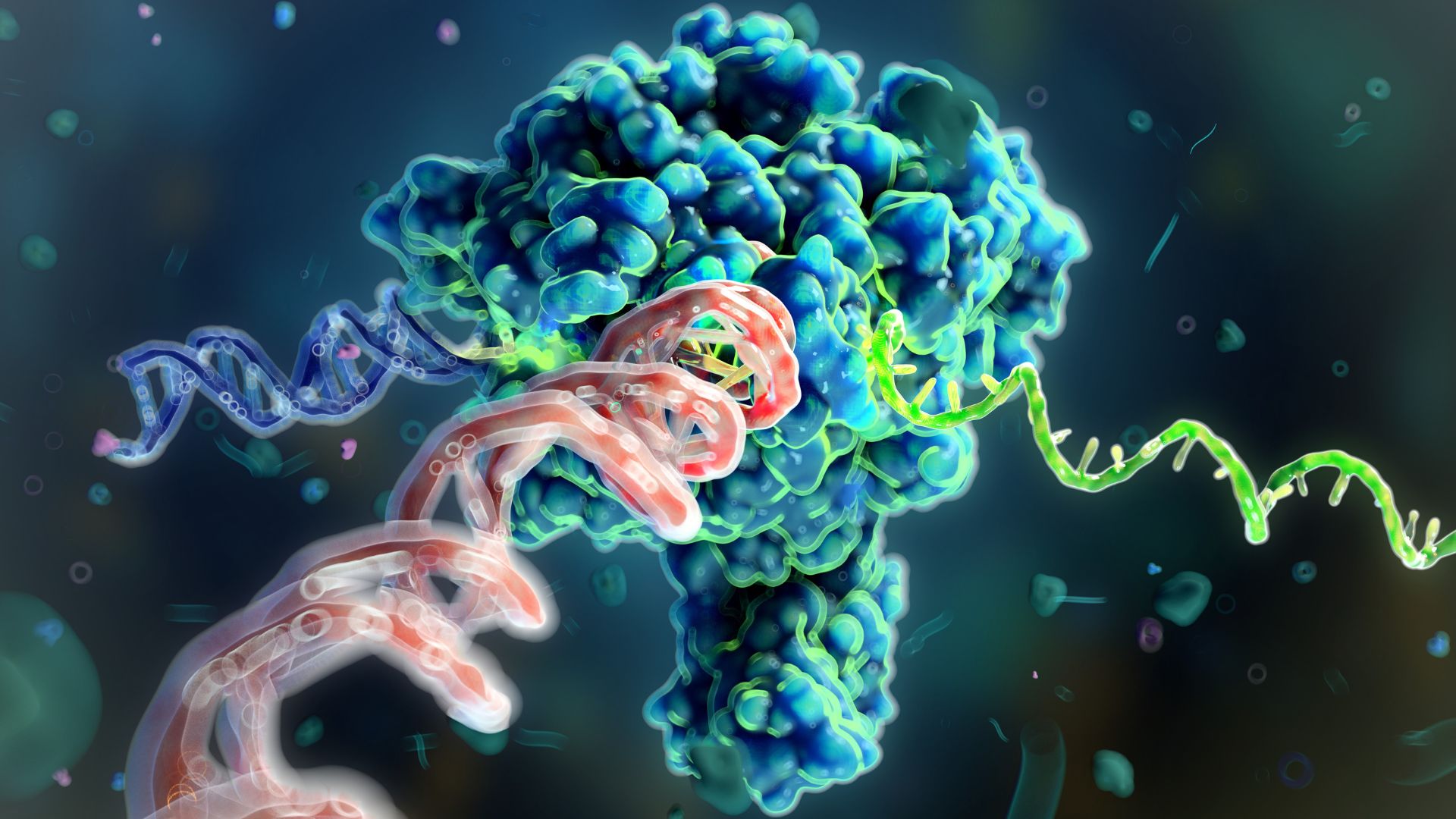
The gene activity of "designer" human cells can be remotely toggled on and off with electric currents, a new study in mice shows.
In a study published July 31 in the journal Nature Metabolism, direct current (DC) from off-the-shelf consumer batteries triggered the release of insulin from genetically engineered human cells that scientists had implanted under the skin of diabetic mice. The insulin successfully restored the rodents' normal blood sugar levels.
The researchers hope this electrical fine-tuning of gene expression, broadly known as "electrogenetic" technology, will eventually be integrated into wearable devices that can be used to tune the activity of designer cells implanted in the human body.
Wearable devices are already in vogue and can monitor pulse, blood pressure, blood sugar levels and more. But currently, no such tech can be used to control gene expression.
Related: How fitness trackers monitor your sleep
To move this idea from science fiction into the real world, Martin Fussenegger, a professor of biotechnology and bioengineering at ETH Zurich and the University of Basel, and his colleagues designed an interface called DC-actuated regulation technology (DART). It's powered by DC from standard 1.5-volt AA or AAA batteries.
As a proof of concept, they tested DART in a mouse model of type 1 diabetes. They implanted engineered human cells in the rodents' backs and stimulated the cells through two acupuncture needles placed near the implantation site. The needles were attached to the batteries via a wire, whose end was plugged into a simple power switch.
The electrical current flowed through the needles and triggered minor oxidative stress in the designer cells, meaning it caused a slight buildup of reactive molecules called reactive oxygen species (ROS). These molecules were detected by a molecular sensor built into the cells.
The sensor, which was engineered to work as a transcription factor — a protein that latches onto DNA to turn a gene "on" or "off" — then bound to a designated spot on the cell's DNA and, in turn, activated the gene of interest, the insulin gene. The human cells were genetically engineered to express, or activate the gene of interest only if the ROS levels produced by the electrical current were high enough, and as the ROS dissipate, the gene switches "off."
Stimulating the designer cells for just 10 seconds once a day was enough to induce gene expression and trigger sufficient insulin release to restore normal blood glucose levels in the lab mice.
Fussenegger told Live Science he thinks this new electrogenetic interface is "a complete game changer."
"It's a tremendous application of electrogenetics," a technique that uses "electronic means to turn on specific gene expression," William Bentley, a synthetic biologist and professor at the University of Maryland who wasn't involved in the research, told Live Science.
The Fussenegger lab previously designed an electrogenetic device that used alternating current (AC) at high voltage to activate cells, but it required too much power to be suitable for wearables. The new study shows that electronic control of gene expression doesn't need a lot of power or fancy devices, Bentley said. "That’s a significant advance."
Bentley, who pioneered this technology and coined the term "electrogenetics," added that the work still only "represents the tip of the iceberg in terms of electronic communication with and control of biology." Bentley's team first demonstrated electronic control of gene expression in experiments involving engineered bacterial cells, but this new study is the first to remotely regulate gene expression in a mammal using a DC-powered device.
Fussenegger believes that, someday, this technology will not only be integrated into wearables but also link people's metabolisms to "an 'internet of the body.'" This would mean that doctors could intervene remotely, from anywhere in the world, he said. However, devices could eventually be programmed to sense and adjust blood sugar automatically, so "there's nothing for humans to do anymore,” Fussenegger added.
Integrating this technology into smartwatches might not be simple, though, Bentley cautioned. One limitation is that you still need the engineered cells implanted underneath that wristband, which may turn off some people, he said.
Fussenegger conceded that there's still a long way to go. The next steps would entail testing this electrogenetic interface in human clinical trials before it could be commercialized and integrated into wearables.







